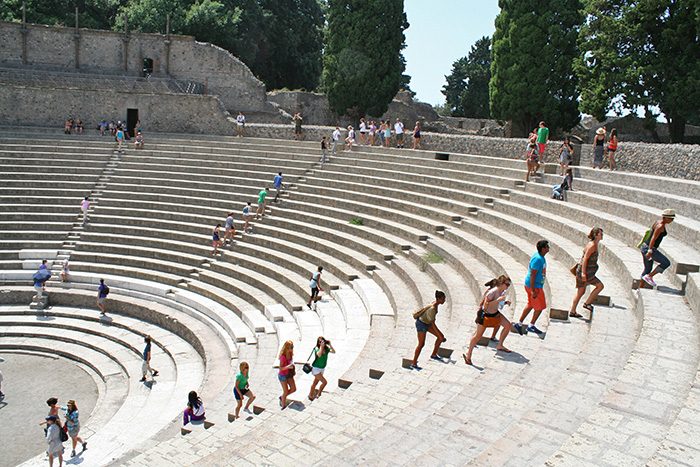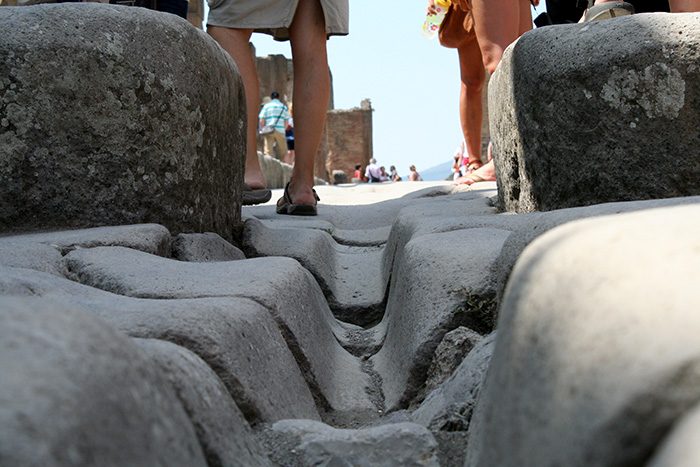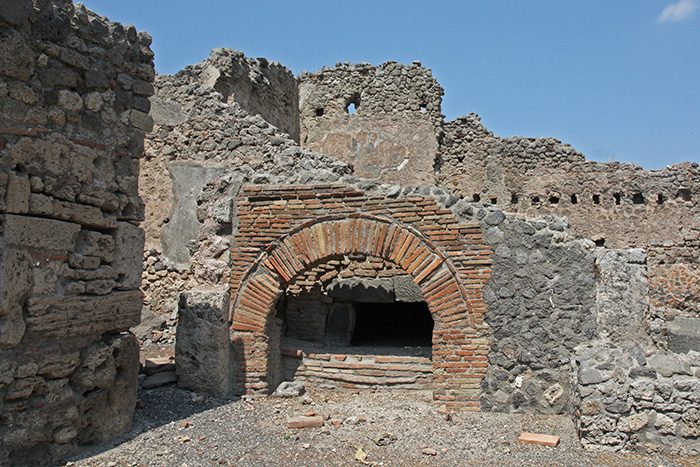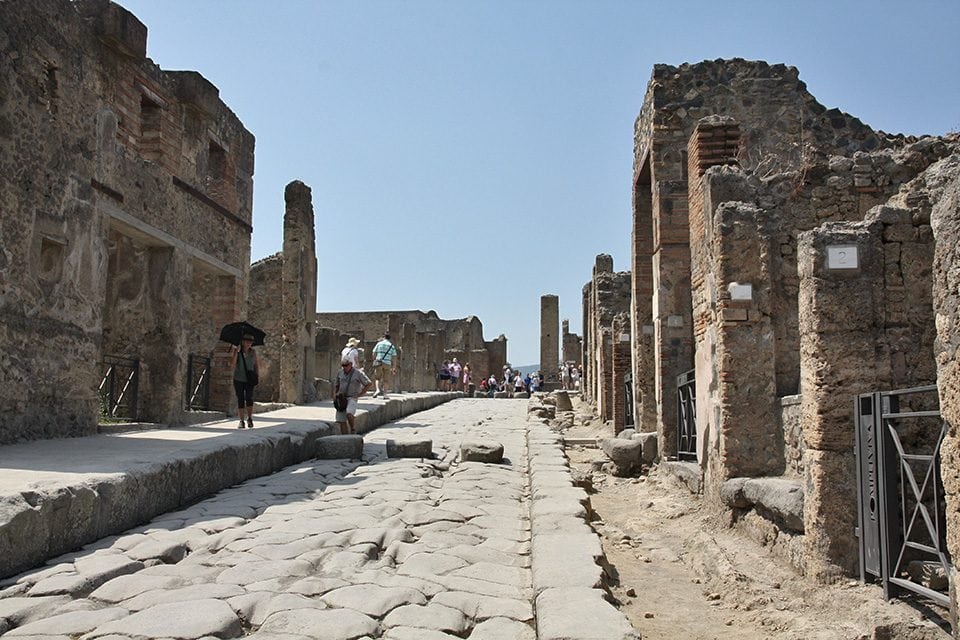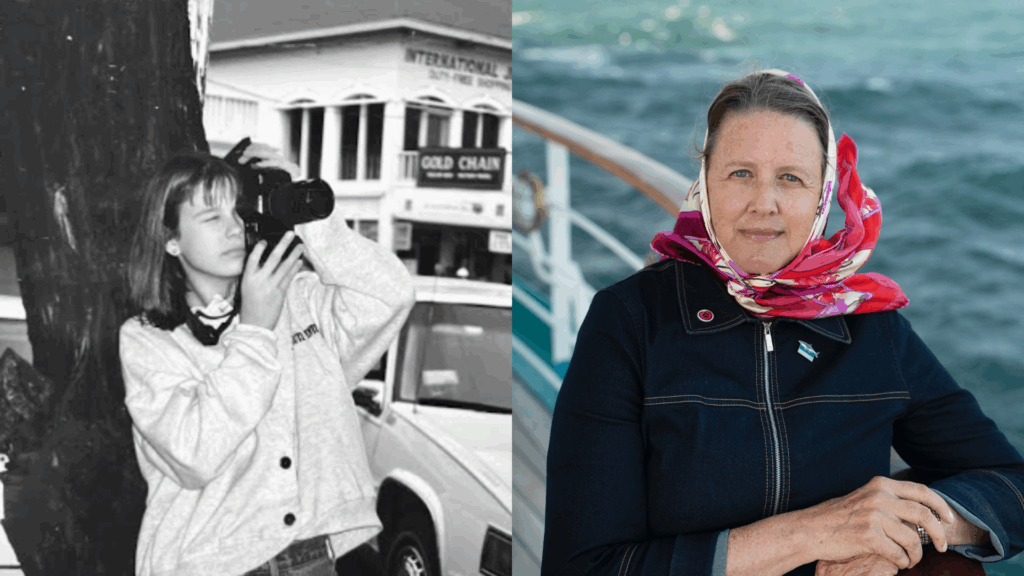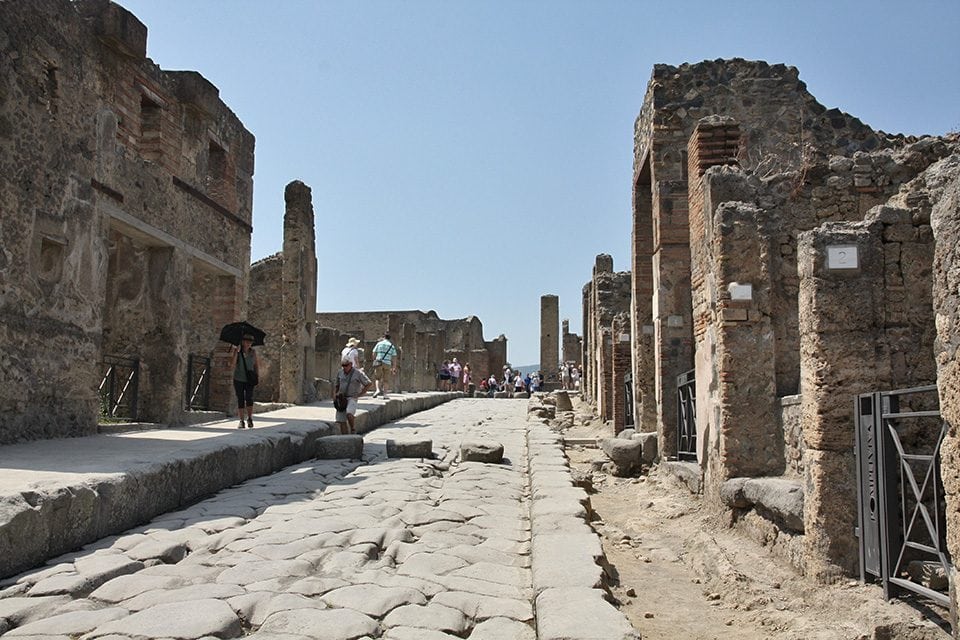
As part of the post-Italy day of reflections, Gwen Conis from the University of Virginia, Sam Hillis from Cal State University Fullerton, and Naomi Newman from Arizona State University host a panel on the ethics of archeology. The question they pose is, at what cost should we be able to explore Pompeii for ourselves?
Pompeii, the city that was famously buried by ash from the eruption of Mt. Vesuvius in AD 79, is one of the few places where we can get a snapshot of a typical ancient city. It was a thriving port city with shops, restaurants, theaters, temples, a forum, and an amphitheater – it’s all still there.
It’s been over 200 years since Pompeii was discovered. Since then more than two thirds of the city has been uncovered, some portions more carefully than others. Today over two million tourists visit the site every year to experience what it might have been like to live at that time.
Unfortunately, this has a down side. After being preserved for almost two millennium the exposed remains now suffer from weather, light, foot traffic, vandalism and outright theft by visitors wanting to take a piece of this historic site home. It has been a challenge to fight against these forces and to continue to preserve the integrity of the frescoes and walls. Some buildings have even collapsed.
During the panel students weigh the the pros and cons of the current situation. The exposure of the Pompeii site means less will be available for future archeologists and visitors. Some students argue that there is no need to preserve it now that we have gathered what we can about the ancient city. Other students feel strongly that in order to feel connected to history, they need to have a physical experience, not just to read about Pompeii in a book or study it online.
This debate applies to many archeological sites. Join our onboard conversation and let us know your thoughts. What do you think the priority should be; visitor interaction or preservation? Can you suggest alternative solutions?
